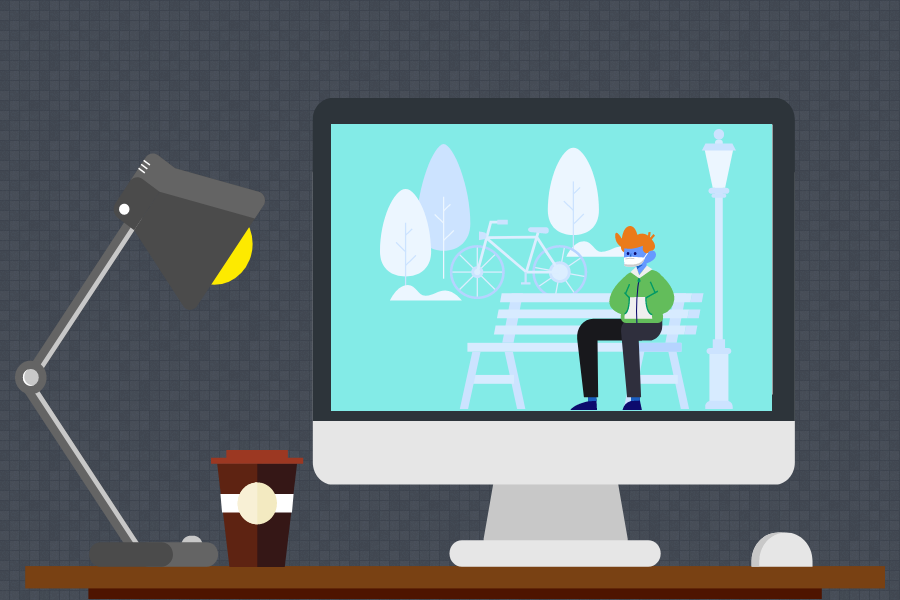How to take full advantage of your wellness break
“I started by making a schedule, filling up time slots with an assortment of activities and personal goals. Instead of aimlessly running down the clock during my wellness break, I now make the most of it.”
December 11, 2020
After eight long months of quarantine, I’ve begun to adapt to this “new normal.” Though I’ve learned to adjust my expectations and change the way I approach my daily life, I still miss daily social interactions that helped me get through my classes. Whether it was walking around the building with friends or simply seeing new faces, there will always be a part of me longing to return to a physical school building.
I crave the time I used to spend with friends, and virtual school’s unlively character amplifies this feeling. In class, students are hesitant to talk. With cameras constantly turned off, making new friends and acquaintances is considerably more challenging. There are no “table-mates” or people whose desks border your own. All we have is our screens.
I decided to take matters into my own hands and adapt by using the daily wellness break to my advantage. Even if I couldn’t forge the same personal connections as I had during in-person learning, I was going to do my best to replicate them.
During a normal school year, fifth period lunch was the highlight of my day. My friends and I would gather around a table in the cafeteria to discuss a variety of topics, from small talk about our days to complex philosophical dilemmas.
This year, we have a 75-minute long break for lunch. The administration created this extended lunch period to allow students to get a break from screens and hoped it would help improve the mental health of students as we are adjusting to the conventions of online school. At first, I didn’t know how to take advantage of the additional half hour; I would play a mind-numbing mobile game like Temple Run, do a little school work or watch Netflix.
Recently, I realized I could be more productive with my time spent; I decided to make a change. I started by making a schedule, filling up time slots with an assortment of activities and personal goals. Instead of aimlessly running down the clock during my wellness break, I now make the most of it.
On Mondays and Thursdays, I scarf down my lunch before heading straight into my basement for a workout. I lift weights, jump rope and do yoga and meditation for thirty minutes. I’ve found that exercising takes my mind off my week’s worth of assignments. Finally, I call a friend and play video games online until I head back into class.
I repeat that routine on Tuesdays and Fridays, but splice in outdoor activities like basketball or a run. My sixth period happens to be my lunch period, which affords me an additional hour on top of the wellness break. This schedule has allowed me to both get active and engage socially everyday during the break.
These minor changes in my schedule have not only made my day easier to sit through, but have also shifted my attitude towards school. Instead of feeling unproductive and lethargic throughout the day, I feel energized, dynamic and satisfied.
I now have an activity to look forward to in the morning, and by taking a break to prioritize goals independent of school, I’m more focused throughout the second half of my day. Most importantly, I’ve noticed amazing improvements in my mental health.
Physical activity is associated with reducing anxiety, depression and negative mood, alongside improving self-esteem and cognitive function. For me, this manifests more in calmness, attentiveness and increased motivation. When working out, the body releases endorphins, which can cause near-euphoric stimulation — this is why runners sometimes get a “runner’s high.”
Exercising is the primary reason for my mood boost, but by coupling this with video games, I’m also able to stay socially active. Isolation —which can lead to chronic loneliness — has a plethora of negative side effects, including, decreased memory and learning, depression, increased stress levels and poor decision making.
Although I’ve stopped doing homework during lunch, ever since I’ve made this change, I’ve experienced a surprising increase in academic success. I didn’t realize that my own isolation had made it more difficult for me to perform well in school.
With my newfound combination of social interaction and physical activity, my entire approach towards the school day has changed. In trying to make online school as similar to in-person learning as possible, I’ve gotten back a lot of what I missed from a regular school day: engaging activity.
Though not everyone lives to play videogames and lift weights, it’s critical to realize that making time for yourself — and your mental and physical well being — should become a priority. When sitting through these long, seemingly never-ending online school days, it can be draining to remain productive. But to make these often monotonous days feel smoother, be mindful of yourself and your needs; we were not made to sit in front of a screen for eight hours a day. Take time out of each day to focus on yourself and your well being, and do it with others. This is what will help us get through online learning, together.











